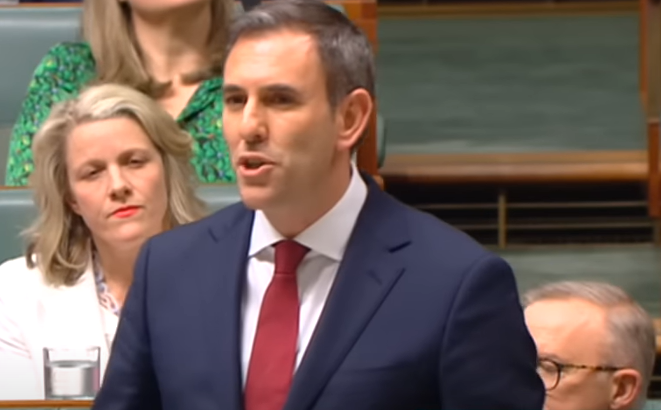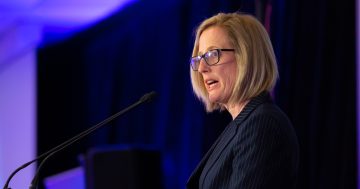
Treasurer Jim Chalmers has talked up the positives in the latest wage price index figures. Photo: File.
Public servants have enjoyed their biggest wage growth in more than a decade but it’s not enough to keep ahead of inflation, according to the latest ABS figures.
Public sector hourly rates of pay grew by 0.7 per cent in the June quarter, which is 3.1 per cent higher than the same time last year, marking the biggest annual increase since March 2013.
The wage price index (WPI) released by the Australian Bureau of Statistics this week also shows private sector wages rose by 0.8 per cent in the June quarter.
The cost of living as measured by the consumer price index (CPI) grew by 0.8 per cent in the same period.
This means public servants’ wages are not keeping pace with rising living costs, adding weight to their fight for higher pay increases than the government has so far been prepared to give.
The Community and Public Sector Union (CPSU) is demanding a 20 per cent increase over three years for all Australian Public Service employees.
The Australian Public Service Commission has only offered a 10.5 per cent hike over the same period.
Negotiations between the parties continue as agreement on wages and conditions for the APS’s next enterprise agreement draws close to being reached.
In the meantime, however, the CPSU is leading industrial action in the form of strikes across Services Australia centres.
The current action is over cuts to entitlements proposed by the agency, but it was preceded by work bans at Services Australia aimed at securing a better pay offer across the sector.
“The Albanese Labor government was elected on a platform of getting wages moving but pay proposals to date are falling short of this commitment,” CPSU national secretary Melissa Donnelly said ahead of the protected action.
“We’ve been consulting our members across the APS extensively and there is consensus that the APSC and the Federal Government can and should do better on pay.
“Our members are adamant that they will not settle for the current unambitious pay proposals.”
While public servants got their biggest wage growth for a decade, workers generally across the nation did not see wage growth go backwards for the first time in three years.
Treasurer Jim Chalmers pointed to positives in the overall figures, saying the nation was seeing the wage growth Labor had promised.
“One of our key objectives in our economic plan was to get wages moving again and this is the first time that real wages haven’t gone backwards, in a quarterly sense, for three years and so that is progress,” he said.
“We’ve taken a different approach and that’s why the wages outcomes under this Labor government have been so much better and so much stronger than under our predecessors.”
But shadow treasurer Angus Taylor said real wages had gone backwards in every quarter on an annual basis since Labor won government.
“This is a direct consequence of Labor’s failure to fight inflation first,” Mr Taylor said.
“And it’s working families who are paying the biggest price.”
EY senior economist Paula Gadsby said there was still concern about low productivity growth and higher unit labour costs, which could fuel further inflation.
In its overview of the latest figures, the ABS noted that the proportion of jobs where wages have risen this quarter was slightly lower than in the June quarter of 2022, but for those jobs that received a wage increase the average increase was larger than last year.
“Looking at WPI jobs in June quarters, it was notable that the share of jobs receiving wage rises of between 4 to 6 per cent (3.3 per cent), continued to grow and is now at the highest level since 2009,” it stated.
“The share of jobs with wage rises of between 3 to 4 per cent (2.1 per cent) and above 6 per cent (1.5 per cent) also continued to rise. Conversely, the share of jobs with wage rises of 2 per cent or less is at the lowest (2.3 per cent) it has been since June 2012, after peaking at 6 per cent of jobs in June 2021.
“Seasonally adjusted private sector wages rose 0.8 per cent over the quarter. Annual growth for the sector was 3.8 per cent, in line with March quarter 2023 to remain at the highest level since June quarter 2012.
“Public sector wages growth was 0.7 per cent over the quarter. Annual growth increased from 2.9 per cent in the March quarter 2023, to 3.1 per cent in the June quarter 2023. This is the highest annual growth for the sector since March quarter 2013.”
Original Article published by Chris Johnson on Riotact.









